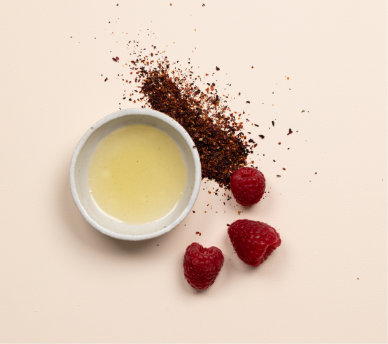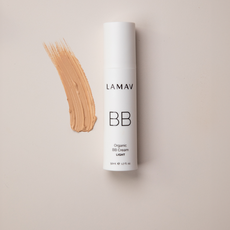Literally translated to ‘the science of life’—Ayurveda is one of the world’s oldest healing systems, with its roots firmly planted in ancient India.
At every touchpoint, it is a holistic philosophy that believes our body, mind and spirit are interlinked, existing in a delicate balance. It also speaks to how each of us are made up of five basic elements—space, air, fire, water and earth—and how these energies combine within us to influence how our body feels and functions.
These energies, or Doshas—Vata, Pitta and Kapha—exist in different ratios within each of us, usually with one more dominant than the others, and in Ayurveda, when they are in balance, we feel healthy, well and vital. However, when there is an imbalance we can experience a myriad of symptoms that can leave us feeling flat, fatigued and unwell.
Unlike Western medicine, Ayurveda takes a holistic approach to healing—considering every element of an individual and crafting a tailored plan that aligns the doshas to restore harmony and balance to the body. While diet and medicine certainly play a role, there are also a number of Ayurvedic practices that foster improved health and wellbeing in their own right.
At LAMAV, we have always been inspired by Ayurveda’s ancient wisdom—and beyond integrating Ayurvedic ingredients into our formulas—we are also passionate about exploring Ayurvedic practices that are proven to enhance wellbeing. Below are a few of our faves…
Early To Rise
For thousands of years, Ayurveda has touted the benefits of ‘early to bed, early to rise’—so that we are in sync with nature’s rhythms. This means that according to Ayurveda, as the sun sets, we should prepare ourselves for bed—and vice versa. When the sun rises, we too should be beginning our day. This practice is linked to the belief that before sunrise, the predominant energy according to time is Vata—when all is calm, quiet and clear—providing the perfect atmosphere to explore other Ayurvedic practices such as breathing, yoga and meditation, which are powerful ways to help foster improved health and wellbeing. While not everyone is an early bird, rising as close to 6am is ideal as at this time of day, according to Ayurveda, you are likely to experience heightened energy. What’s fascinating is that now, Western research is beginning to support this theory—with one study highlighting how children who are encouraged to rise early, also experience the benefits of good health.
Dry Body Brushing
While dry body brushing is certainly nothing new within the beauty world, in Ayurveda, body brushing—or garshana—is not only practiced for its beauty benefits, but for its abilities to assist with lymphatic drainage and the removal of ama—wastes and toxins—from the body. Garshana can be done using either raw silk or linen gloves, or a dry, natural-bristle body brush—and helps to combat feelings of fatigue and sluggishness, boosting energy and improving the body’s natural detoxification processes. As the practice itself is stimulating, it is particularly beneficial for those where Kapha dominates as it counteracts the heavy sluggishness that is common with this constitution and can be enjoyed daily. For those where Vata or Pitta dominate, garshana may only need to be practiced 2–3 times a week to feel the benefits.
Aside from its abilities to remove ama and rebalance the body internally, dry body brushing is also an excellent way to gently exfoliate and firm the skin, boost circulation and stimulate cellular turnover. After sloughing away dead skin cells, supercharge your garshana practice by incorporating self-massage—using warm oil to help bring about a sense of calm and provide your skin with a burst of moisture and nourishment.
Kansa Massage
Just as our bodies benefit from massage, so too does our complexion. In fact, the practice of Ayurvedic Kansa Massage has been around for centuries and is considered sacred due to its ability to bring harmony to the mind and body—balancing the doshas, unblocking energy channels and improving the body’s natural healing mechanisms. LAMAV’s Ayurvedic Kansa Wand not only helps to boost circulation and improve lymphatic drainage, but also assists in detoxifying and refreshing dull, lacklustre skin. When incorporated regularly, this wellness practice also promotes collagen production, plumps skin, firms the jawline, depuffs eyes and relaxes the neck and shoulders.
To experience the benefits for yourself, begin by applying your chosen LAMAV Booster or Serum to freshly cleansed skin. Then, beginning in the middle of your forehead, use swift, circular strokes to massage down one side of the face before moving to the other. Be gentle, but use firm pressure before building to larger more fluid circles around the eyes and across the cheekbones. Finish your practice by using the Kansa Wand in long upwards and outwards strokes, up the jawline and neck.
Mindfulness & Movement
Firmly rooted in Ayurveda are the practices of yoga, pranayama—or breathing—and meditation. While these are able to be practised in isolation, in Ayurveda, they are deeply woven together and praised for their ability to holistically foster balance between the mind and body. The benefits of each have been widely acknowledged, with yoga and pranayama bringing strength to the physical body—and meditation bringing harmony to the mind, improving cognitive function and combating the effects of age-related disease.
The healing benefits of each of these practices is also due to their ability to encouarge the body to spend more time in the parasympathetic nervous system, rather than the parasympathetic nervous system which—due to our busy modern lives—is where most of us spend much of our time. By taking the time to foster a mindfulness practice however, we can combat the effects of stress, improve our sleep and strengthen our immune system.











